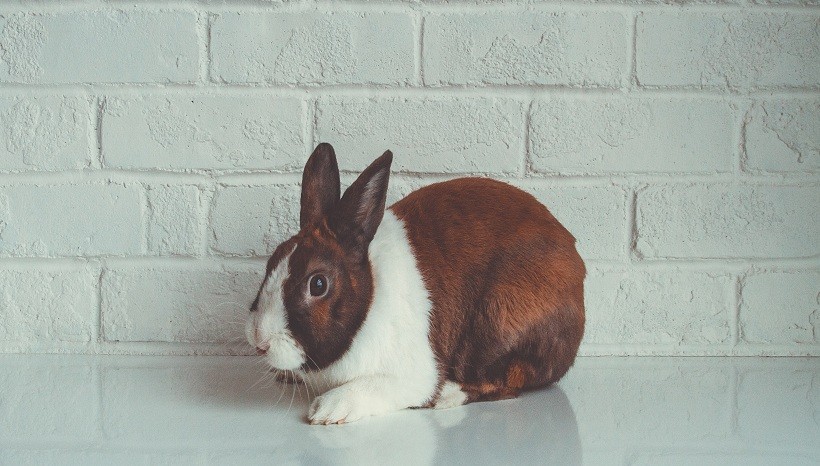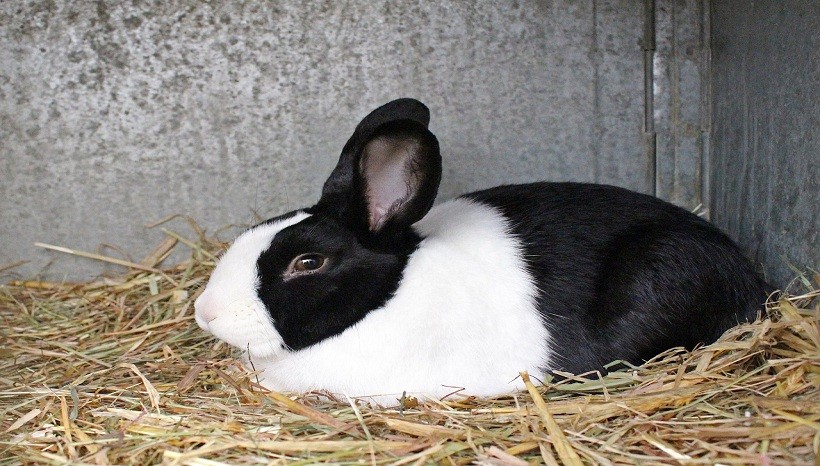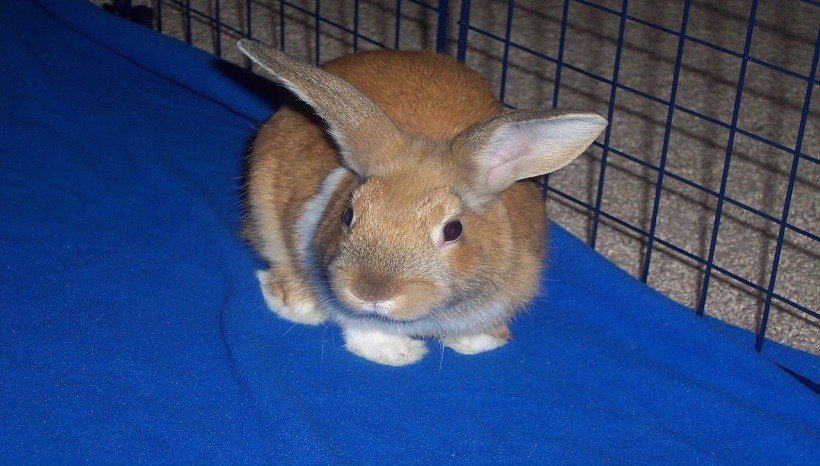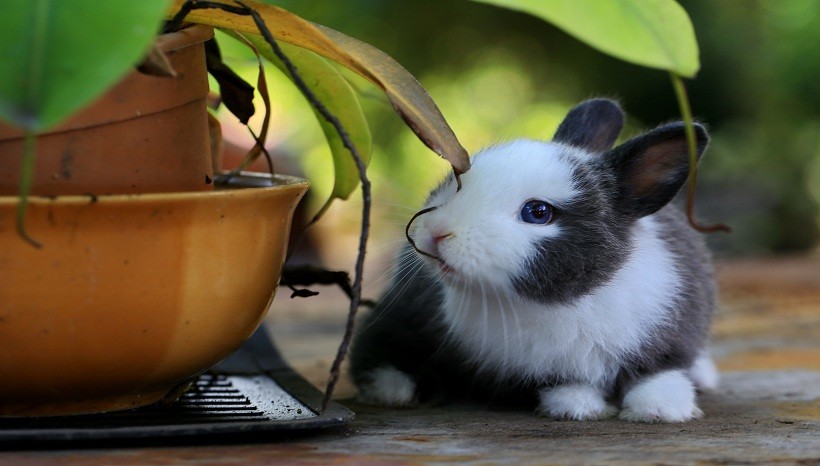The Dutch rabbit has no exact origin. Some people say that it has its origin in the Netherlands and some say it has its origin in England. The scientific name of these rabbit breeds is Oryctolagus cuniculus. This rabbit is also known as Brabander or Holland.
It was once considered one of the most popular rabbit breeds. But the popularity of these Rabbit Breeds diminished after the development of the dwarf rabbits. The American Rabbit Breeders’ Association and British Rabbit Council both have recognized this type of rabbit breed.
There are many types of rabbit breeds, but here, we are going to discuss the Dutch Rabbit breeds only.
Dutch rabbit kinds

The seven varieties of the Dutch rabbit colors are recognized by the American Rabbit Breeders’ Association, i.e. blue, with grey eyes; grey, with dark brown eyes and white hair; steel, with brown eyes; Chinchilla, with blue-grey eyes; chocolate, (dark brown color) with brown eyes; black; and tortoise, with brown eyes and dark-colored face. A color that is still in development is Lilac. These colors give them different looks that can be included in their kinds. Therefore, we can say that there are seven kinds of these “Rabbit Breeds“. Some of the kinds of these Dutch rabbit breeds are as follows:
Dutch dwarf rabbit
The Dutch dwarf rabbits are also known as Netherland dwarf rabbits. These types of rabbit breeds are one of the smallest rabbit breeds. The Dwarfing gene is dominant in them; therefore, they appear to be small in size. They weigh 1.13 kgs only. Many of the Dutch dwarf rabbits are for sale in different pet stores. The cost range of these rabbit breeds is from 30 dollars to 90 dollars.
Blue Dutch rabbit
The Blue Dutch rabbits have a small, compact, and rounded body with the rounded head. They have two types of legs, i.e. back legs and the front legs. The black legs are slightly longer than the front legs. These rabbit breeds are being used as show animals.
The Dutch Dwarf rabbits are more jumpy and graceful than the other rabbit breeds. The white-collar and the white flame on their nose make them most beautiful of the other rabbit breeds.
Black Dutch rabbit
The Black Dutch rabbit has dark brown-colored eyes and the fur of pure Black and white color. These rabbits are also called show rabbits because people use them in different pet shows. In addition to this, the Dutch rabbits for sale have become a business, and people also use them for various trade purposes.
Chocolate Dutch rabbit
The Chocolate Dutch rabbit has brown-colored eyes with a brown face. These rabbit breeds are also very well-mannered and are being used as pets by many children in the different parts of the world. The female Dutch rabbits for sale are available in different pet stores, and people buy them for spending their time.
Dutch lop rabbit
The Dutch lop rabbits are also known as Holland lop rabbits. These cute rabbit breeds weigh 1.81 kgs. The ears, head, fur, and eyes of these rabbit breeds make them unique than the other breeds. Talking about the Dutch rabbit stuffed animals, these are the animal toys made of fabric material having a soft filling.
Dutch belted rabbit
The Dutch belted rabbits are the alternative breeds that were used for many of the toxicity testings. The average size of these breeds is 6 to 8 inches. Their sexual maturity period is about 6 to 9 months for males and 5 to 8 months for females. In addition to this, the Folkmanis Dutch rabbit puppet is a type of hand puppet with a movable head and arms. The hands are used to move the head and arms of these toy-like puppets.
Dutch rabbit lifespan

The average lifespan of these rabbit breeds is about 5 to 8 years. But the life span can be extended depending upon the quality of the food and the environment, given to them. Lilac Rabbits can live up to 9 to 12 years. The Dutch rabbits are the smallest rabbit breeds and can be easily handled; therefore, people like to adopt them as their pets.
Providing them proper health and care can increase their lifespan for up to 10 years, which are not so short. That’s why we can say that the extent of lifespan is dependent on the diet and care of these breeds. Rabbits can eat Asparagus because it is a great source of fiber and nutrients. Rabbits Eat Grapes for bonding.
Dutch rabbit size

The Dutch rabbits are the smallest rabbit breeds, but we cannot say them, dwarfs. At the age of about 6 months, these rabbits grow so rapidly that they become so big to be handled. Instead of all this, according to the American Dutch Rabbit Club, their weight becomes about 1.63 kgs at the maturity level. Besides, these rabbits like to eat vegetables and hays. However, diet and exercise can also affect the size of these rabbit breeds from their average size.
Dutch rabbit colors
There exist various varieties and colors of the Dutch rabbit breeds, but there are only seven colors that are recognized by the Arabian Rabbit Breeders’ Association. These colors include Black, grey, blue, chinchilla, chocolate, steel, and tortoise. These colors give the rabbit breeds different physical appearances giving them various eye colors.
The chinchilla has blue-grey eyes, whereas; the black color is the most unique and standard color of these breeds. The steel color appears similar to grey color, but it is not grey, slightly different. Due to their beautiful colors, they get the attention of many people, and they make them their pets.
Dutch rabbit breeders

There are many Dutch rabbit breeders throughout the world, but some of them are as given below:
- Brown’s Honey Bunny Farm is present in Connecticut. Black, blue, and steel varieties are present on this farm.
- Marquis 4D Rabbitry is present in Illinois. Several varieties including Black, blue, steel, and Tort are present here.
- West Coast Rabbits that are present in Iowa. The black, blue, chocolate, chinchilla and, steel-colored varieties of Dutch rabbits are present here.
- Blue Barn Bunnies is present in Ohio. It is raising Grey Dutch.
Dutch rabbit facts
The Dutch rabbits are very friendly and loving rabbit breeds. These breeds are very fun-loving. People buy them to spend time with them. There are many facts about these small rabbit breeds, but some of them are as follows:
- The Dutch rabbits are small-sized rabbit breeds with a compact and rounded body.
- These rabbits can be easily trained because these are very intelligent and fun-loving rabbit breeds.
- A unique name scut is given to the tail of these rabbit breeds.
- Giving them proper preventive measures and a good diet can enhance their lifespan.
Baby Dutch rabbit

The gestation period of the Dutch rabbits is 30 to 33 days. The baby Dutch rabbit also has a good physical appearance with their unique characteristics. After the gestation period of 30 days, the female Dutch rabbit gives birth to the young ones known as “kittens”. These small breeds are blind and hairless and gain consciousness after ten days of their birth. These baby Dutch rabbit breeds are so cute that people are unable to stay away from them.
Conclusion
As we discussed, the Dutch rabbit breeds are small and unique rabbit breeds. These new breeds can be used for several purposes like; they can be used as pets. These are also used in pet shows, which attract people a lot. Many Dutch rabbit breeders throughout the world have a business of these breeds and also use them for trade purposes. So, we must also take care of these breeds if we want to make good use of them.
FAQ
Here, we are going to have a look at the answers to the following questions:
1. How long Dutch rabbits live?
The average lifespan of these rabbit breeds is about 5 to 8 years. But if we take care of these breeds properly and give them a good diet, we can increase their lifespan for up to 10 years, which is not too short.
2. Can a Dutch rabbit live outside?
There are no proper guidelines and requirements for the living of the Dutch rabbit. They can live both outside and inside. But there must be the presence of some sort of cage for its safety. Also, there must be some space present in the cage to run around.
3. What is a Dutch rabbit used for?
As rabbits can be used for meat and fur purposes, but Dutch rabbits can’t be, because it is of small size. Instead of this, these small rabbit breeds are used in the pet show; that’s why it is known as a show rabbit.
if you want to learn more about pets visit us at petshoods
{ "@context": "https://schema.org", "@type": "Article", "mainEntityOfPage": { "@type": "WebPage", "@id": "https://petshoods.com/dutch-rabbit-breeds/" }, "headline": "Dutch rabbit Breeds", "description": "Dutch rabbit Breeds, Dutch rabbit kinds, Dutch dwarf rabbit, Blue Dutch rabbit, Black Dutch rabbit, Chocolate Dutch rabbit, Dutch lop rabbit, Dutch belted rabbit.", "image": "https://petshoods.com/wp-content/uploads/2020/05/Dutch-rabbit-Breeds.jpg", "author": { "@type": "Person", "name": "Jeremy" }, "publisher": { "@type": "Organization", "name": "Petshoods", "logo": { "@type": "ImageObject", "url": "https://petshoods.com/wp-content/uploads/2019/02/13925402_1502331219793083_1620090286454245017_n.jpg" } }, "datePublished": "2020-05-16", "dateModified": "2021-07-16" } { "@context": "https://schema.org", "@type": "FAQPage", "mainEntity": [{ "@type": "Question", "name": "How long Dutch rabbits live?", "acceptedAnswer": { "@type": "Answer", "text": "The average lifespan of these rabbit breeds is about 5 to 8 years. But if we take care of these breeds properly and give them a good diet, we can increase their lifespan for up to 10 years, which is not too short." } },{ "@type": "Question", "name": "Can a Dutch rabbit live outside?", "acceptedAnswer": { "@type": "Answer", "text": "There are no proper guidelines and requirements for the living of the Dutch rabbit. They can live both outside and inside. But there must be the presence of some sort of cage for its safety. Also, there must be some space present in the cage to run around." } },{ "@type": "Question", "name": "What is a Dutch rabbit used for?", "acceptedAnswer": { "@type": "Answer", "text": "As rabbits can be used for meat and fur purposes, but Dutch rabbits can’t be, because it is of small size. Instead of this, these small rabbit breeds are used in the pet show; that’s why it is known as a show rabbit." } }] } { "@context": "https://schema.org/", "@type": "ItemList", "itemListElement": [ { "@type": "ListItem", "position": 1, "name": "Dutch rabbit kinds", "url": "https://petshoods.com/dutch-rabbit-breeds/#Dutch_rabbit_kinds" }, { "@type": "ListItem", "position": 2, "name": "Dutch dwarf rabbit", "url": "https://petshoods.com/dutch-rabbit-breeds/#Dutch_dwarf_rabbit" }, { "@type": "ListItem", "position": 3, "name": "Blue Dutch rabbit", "url": "https://petshoods.com/dutch-rabbit-breeds/#Blue_Dutch_rabbit" }, { "@type": "ListItem", "position": 4, "name": "Black Dutch rabbit", "url": "https://petshoods.com/dutch-rabbit-breeds/#Black_Dutch_rabbit" }, { "@type": "ListItem", "position": 5, "name": "Chocolate Dutch rabbit", "url": "https://petshoods.com/dutch-rabbit-breeds/#Chocolate_Dutch_rabbit" }, { "@type": "ListItem", "position": 6, "name": "Dutch lop rabbit", "url": "https://petshoods.com/dutch-rabbit-breeds/#Dutch_lop_rabbit" }, { "@type": "ListItem", "position": 7, "name": "Dutch belted rabbit", "url": "https://petshoods.com/dutch-rabbit-breeds/#Dutch_belted_rabbit" }, { "@type": "ListItem", "position": 8, "name": "Dutch rabbit lifespan", "url": "https://petshoods.com/dutch-rabbit-breeds/#Dutch_rabbit_lifespan" }, { "@type": "ListItem", "position": 9, "name": "Dutch rabbit size", "url": "https://petshoods.com/dutch-rabbit-breeds/#Dutch_rabbit_size" }, { "@type": "ListItem", "position": 10, "name": "Dutch rabbit colors", "url": "https://petshoods.com/dutch-rabbit-breeds/#Dutch_rabbit_colors" }, { "@type": "ListItem", "position": 11, "name": "Dutch rabbit breeders", "url": "https://petshoods.com/dutch-rabbit-breeds/#Dutch_rabbit_breeders" }, { "@type": "ListItem", "position": 12, "name": "Dutch rabbit facts", "url": "https://petshoods.com/dutch-rabbit-breeds/#Dutch_rabbit_facts" }, { "@type": "ListItem", "position": 13, "name": "Baby Dutch rabbit", "url": "https://petshoods.com/dutch-rabbit-breeds/#Baby_Dutch_rabbit" } ] }